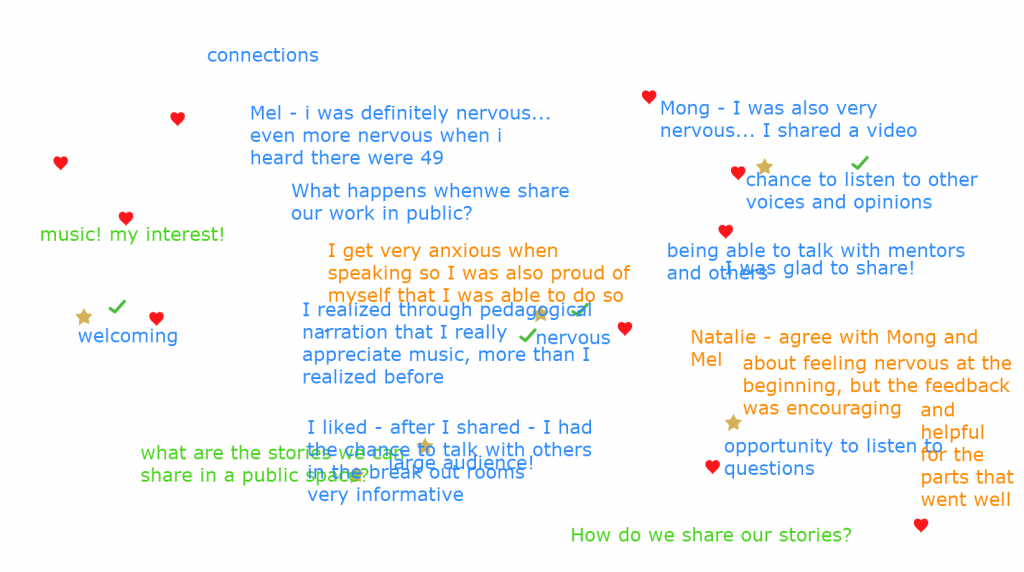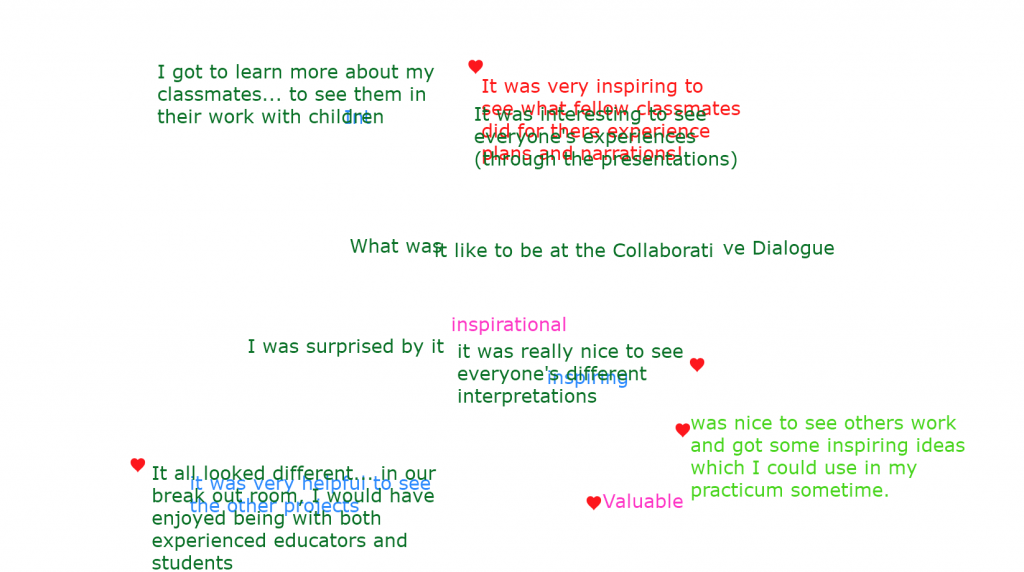By Amanda Gillmore
The outdoor circle was recently built using paving stones. On top of these stones are 11 seats that are made out of cement blocks that have caps on them. I was sitting on one of the seats and began pushing the snow, back and forth, between my boots. There is one child sitting across from me. There is no conversation between us, but he observes me moving the snow, back and forth. We notice that this action results with some of the stones peeking through the snow. This child gets up, walks across the circle and sits beside me on one of the other seats. I make eye contact with the child as I continue slowly moving the snow, back and forth, between my boots.

Child: “We need to cover it.”
Amanda: “Why do we need to cover it?”
Child: “So nobody finds it!”
Amanda: ” Finds what?”
Child: “The treasure, Amanda!”
As it states in the BC Early Learning Framework (Government of BC, 2019), “Children can engage with their own ideas, theories, and inquires in ways that are meaningful to them” (p. 68). With this recent snowfall, the snow created an additional material in this child’s outdoor learning environment. This additional material gave this child an opportunity to engage, to be curious, to create wonder and to imagine- and all of these opportunities were created because of just one additional layer, a hidden layer, to what was once familiar to this child.
Reference:
Government of British Columbia. (2019). British Columbia early learning framework (2nd ed.). Victoria: Ministry of Education, Ministry of Health, Ministry of Children and Family Development, & British Columbia Early Learning AdvisorGroup. https://www2.gov.bc.ca/gov/content/education-training/early-learning/teach/early-learning-framework


